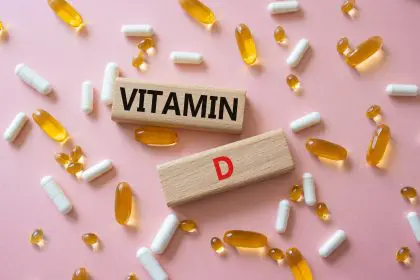Depression affects millions of people worldwide, manifesting through various emotional, cognitive, and physical symptoms. While everyone experiences occasional sadness, clinical depression involves persistent symptoms that significantly impact daily functioning. Recognizing these warning signs early can lead to timely intervention and improved outcomes. This comprehensive guide explores the ten most common symptoms of depression, helping you understand when normal emotional fluctuations might indicate something more serious.
Persistent sadness or empty mood
The first hallmark sign of depression is a pervasive feeling of sadness, emptiness, or hopelessness that doesn’t seem to lift. Unlike temporary sadness triggered by specific events, depressive sadness often feels heavier and more constant. People experiencing this symptom describe it as feeling “numb” or “hollow” rather than actively sad. This emotional state typically lasts for most of the day, nearly every day, for at least two weeks. The persistent nature of this sadness differentiates it from normal mood fluctuations and makes it particularly exhausting for those experiencing it.
Many people with depression report that this sadness feels different from grief or situational sadness, describing it as “being trapped under a heavy blanket” or “seeing the world through a gray filter.” This pervasive emotional state can make even previously enjoyable activities feel meaningless and can seem impervious to good news or positive experiences.
Loss of interest or pleasure
The second major symptom of depression is anhedonia—a diminished ability to experience pleasure or interest in previously enjoyed activities. Someone who once loved painting, playing music, or socializing might suddenly find these activities meaningless or too demanding. This symptom often develops gradually, with people first noticing they derive less satisfaction from hobbies before potentially abandoning them altogether.
This loss extends beyond mere hobbies to include reduced interest in social relationships, career achievements, and even basic pleasures like eating favorite foods or enjoying physical intimacy. The brain’s reward system functions differently during depression, making it difficult to experience the neurochemical responses that typically create feelings of pleasure and satisfaction. This symptom can be particularly troubling for loved ones, who may misinterpret this withdrawal as laziness or rejection rather than a clinical symptom.
Changes in sleep patterns
The third common symptom involves significant changes in sleep patterns. Depression can cause either insomnia (difficulty falling or staying asleep) or hypersomnia (excessive sleeping). Insomnia associated with depression often involves waking in the early morning hours unable to return to sleep, or experiencing restless, unrefreshing sleep. Conversely, some people with depression find themselves sleeping far more than usual yet still feeling exhausted upon waking.
These sleep disturbances create a vicious cycle, as poor sleep further impacts mood, energy levels, and cognitive function. Sleep changes often appear early in the development of a depressive episode and may persist even as other symptoms begin to improve with treatment. Research shows that the relationship between sleep and depression is bidirectional—sleep problems can both contribute to and result from depression.
Fatigue and decreased energy
The fourth symptom is a profound sense of tiredness that isn’t relieved by rest. This fatigue makes even simple tasks feel overwhelming and depletes motivation. People experiencing depression-related fatigue often describe feeling “heavy” or as though moving through thick mud. This exhaustion differs from normal tiredness in its persistence and severity.
This fatigue can manifest physically, making limbs feel heavy and movements require conscious effort. Cognitively, it can create “brain fog” that makes concentration difficult. The fatigue associated with depression often doesn’t respond to typical remedies like extra sleep or caffeine, contributing to frustration and reinforcing feelings of hopelessness. Even minor activities like showering or preparing simple meals can become overwhelming energy demands.
Changes in appetite and weight
The fifth symptom involves significant changes in eating patterns and, consequently, weight. Some people experience diminished appetite and unintentional weight loss during depression, while others may engage in emotional eating that leads to weight gain. These changes typically involve a shift of more than 5% of body weight within a month when not actively trying to gain or lose weight.
Depression can alter the body’s hunger and satiety cues, diminish the pleasure derived from eating, or trigger emotional eating as a coping mechanism. The relationship between mood and appetite is complex, involving shared neurotransmitter systems. For some, food loses its taste appeal entirely (a condition called dysgeusia), while others may crave carbohydrate-rich comfort foods that temporarily boost mood-regulating neurotransmitters.
Difficulty concentrating and making decisions
The sixth symptom involves cognitive changes, particularly problems with concentration, memory, and decision-making. Depression can impair working memory and executive function, making it difficult to focus on tasks, process information efficiently, or make even minor decisions. This symptom can significantly impact work performance, academic achievement, and daily functioning.
People experiencing this symptom often report reading the same paragraph repeatedly without absorption, forgetting conversations, or becoming overwhelmed by previously manageable choices. These cognitive effects can cause additional stress as people worry about their mental capabilities and job performance. The indecisiveness associated with depression can extend from major life decisions to seemingly trivial choices like what to eat or wear.
Feelings of worthlessness or excessive guilt
The seventh symptom involves distorted negative thinking, particularly thoughts of worthlessness, excessive guilt, or inappropriate self-blame. People with depression often interpret neutral events through a negative lens and may blame themselves for circumstances beyond their control. These thoughts typically appear irrational to others but feel completely valid to the person experiencing depression.
This symptom can manifest as harsh self-criticism, rumination over minor past mistakes, or feelings of being fundamentally flawed or burdensome to others. Unlike appropriate guilt that leads to making amends, depression-related guilt tends to be paralyzing and unproductive. These persistent negative thoughts can become so convincing that they resist logical counterarguments and reinforce the depression itself.
Slowed movement and speech
The eighth symptom, psychomotor retardation, involves visibly slowed physical movements, speech, and thought processes. This may present as a flat, monotone voice, delayed responses in conversation, reduced facial expressiveness, or slowed walking pace. Some people describe feeling as though their thoughts are moving through molasses, creating noticeable pauses before responding to questions.
This symptom reflects depression’s impact on brain regions controlling movement and processing speed. In severe cases, this slowing becomes pronounced enough for others to notice without being told about the person’s depression. The opposite—psychomotor agitation, involving restlessness and inability to sit still—can also occur with depression, though slowing is more common.
Thoughts of death or suicide
The ninth and most serious symptom involves recurring thoughts of death, dying, or suicide. These thoughts range from passive wishes (“I wish I wouldn’t wake up tomorrow”) to active suicidal ideation with specific plans. This symptom represents depression at its most dangerous stage and requires immediate professional intervention.
Not everyone with depression experiences suicidal thoughts, but their presence indicates severe depression requiring urgent attention. Risk factors for suicidal thoughts include feelings of hopelessness, social isolation, substance use disorders, and previous suicide attempts. Even when other depression symptoms begin improving with treatment, suicide risk can temporarily increase as energy levels improve before mood fully stabilizes, making continued monitoring essential.
Physical symptoms
The tenth symptom category encompasses various physical complaints that often accompany depression but might not immediately seem connected to mental health. These include persistent headaches, digestive problems, chronic pain, and increased sensitivity to pain. These physical manifestations demonstrate depression’s whole-body impact rather than being “just in one’s head.”
The connection between depression and physical symptoms stems from shared neurobiological pathways affecting both mood and physical sensations. Importantly, these physical symptoms often don’t respond well to standard medical treatments when depression is the underlying cause, making comprehensive treatment essential. The physical nature of these symptoms can sometimes lead to extensive medical testing before the connection to depression is recognized.
Depression represents a complex interplay of biological, psychological, and social factors requiring professional assessment for proper diagnosis and treatment. If you or someone you know experiences several of these symptoms for more than two weeks, seeking professional help is advisable. Effective treatments exist, including psychotherapy, medication, lifestyle changes, and newer approaches for treatment-resistant cases. With proper intervention, most people with depression can experience significant improvement and recovery.












